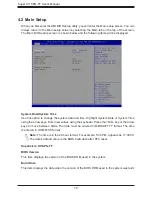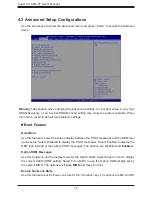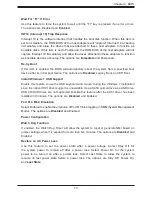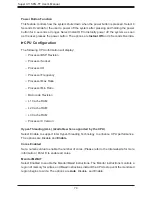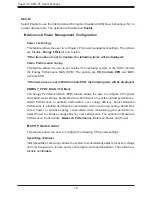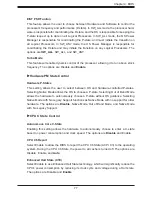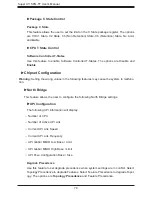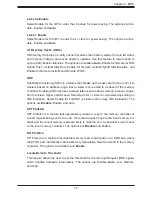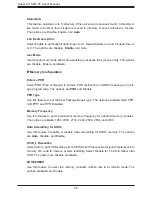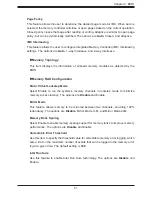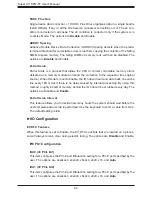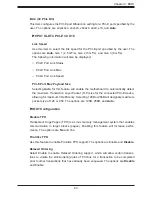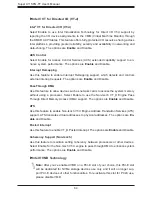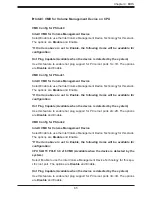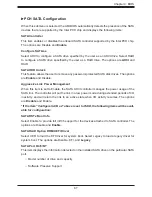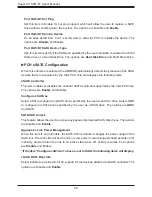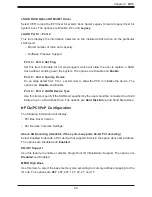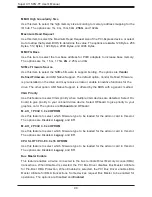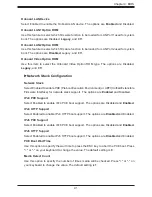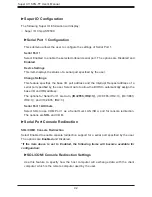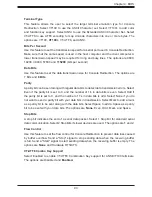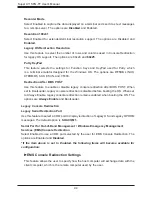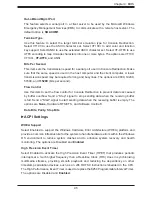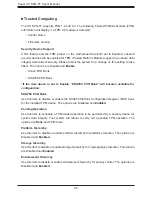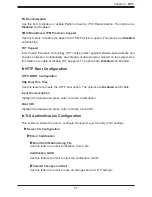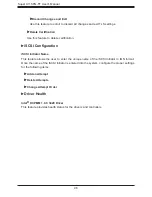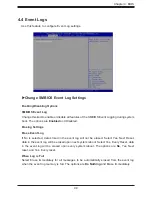
Super X11SPG-TF User's Manual
84
Intel
®
VT for Directed I/O (VT-d)
Intel
®
VT for Directed I/O (VT-d)
Select Enable to use Intel Virtualization Technology for Direct I/O VT-d support
by
reporting the I/O device assignments to the VMM (Virtual Machine Monitor) through
the DMAR ACPI tables. This feature offers fully-protected I/O resource sharing across
Intel platforms, providing greater reliability, security and availability in networking and
data-sharing. The options are
Enable
and
Disable.
ACS Control
Select Enable for Access Control Services (ACS) extended capability support to en-
hance system performance. The options are
Enable
and Disable.
Interrupt Remapping
Use this feature to enable Interrupt Remapping support, which detects and controls
external interrupt requests. The options are
Enable
and Disable.
PassThrough DMA
Use this feature to allow devices such as network cards to access the system memory
without using a processor. Select Enable to use the Non-Isoch VT_D Engine Pass
Through Direct Memory Access (DMA) support. The options are
Enable
and Disable.
ATS
Use this feature to enable Non-Isoch VT-d Engine Address Translation Services (ATS)
support. ATS translates virtual addresses to physical addresses. The options are
En-
able
and Disable.
Posted Interrupt
Use this feature to enable VT_D Posted Interrupt. The options are
Enable
and Disable.
Coherency Support (Non-Isoch)
Use this feature to maintain setting coherency between processors or other devices.
Select Enable for the Non-Isoch VT-d engine to pass through DMA to enhance system
performance. The options are
Enable
and Disable.
Intel® VMD Technology
Note:
After you’ve enabled VMD on a PCI-E slot of your choice, this PCI-E slot
will be dedicated for NVMe storage devices use only, and it will no longer sup-
port PCI-E devices of other functionalities. To re-activate this slot for PCI-E use,
please disable VMD.
Содержание X11SPG-TF
Страница 1: ...USER S MANUAL Revision 1 1b X11SPG TF ...

